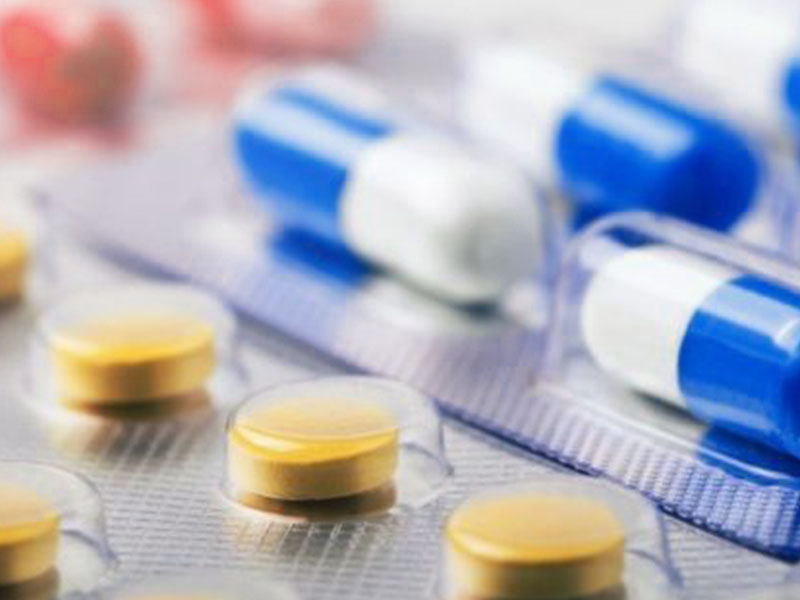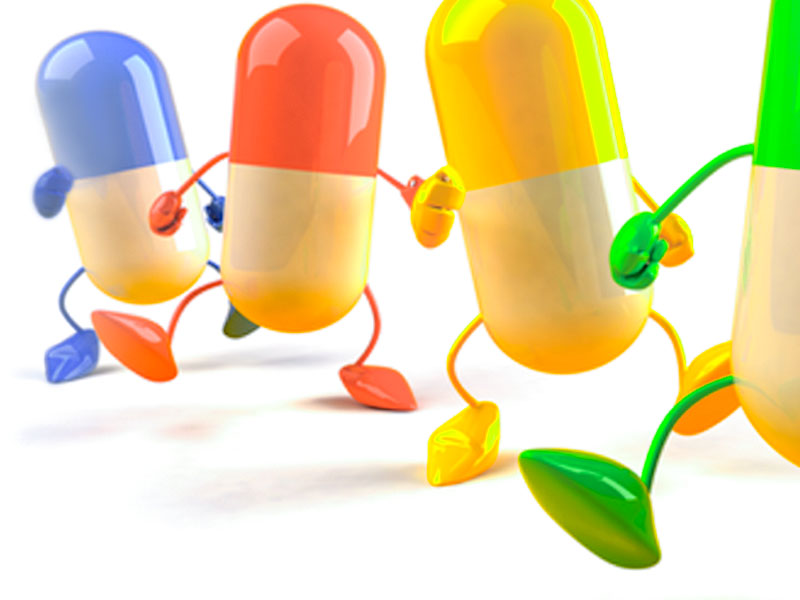1 About The Impurity Control Of APIs In Different Stages
It usually takes a long time from drug research and development to product launch, and the focus of different research and development stages is different. The primary task of carrying out impurity research at each stage is patient safety. According to the proposed treatment indications, dosage form, route of administration, duration of administration, and patient population, impurity research should be analyzed in detail based on specific conditions.
Cost is one of the major considerations in phased impurity studies. In the early stage of clinical research and development, it is necessary to focus on the research on the organic impurities that are most likely to exist and already exist in the API.
Starting materials, intermediates, reagents, catalysts, and solvents used in the synthesis of APIs are significant potential impurities. The number of reaction steps away from the final drug substance in the synthetic process is related to the likelihood that potential impurities will be removed. The intermediates, reagents and solvents of the last step reaction, as well as the predictable by-products and main degradation products are the focus of impurity research at this stage.
In clinical phase III and subsequent stages, after the commercial synthesis route is determined, it is necessary to conduct in-depth research on potential impurities in each step, carry out impurity removal and derivatization studies, and determine the key points of synthesis process control. With the clinical progress of the drug, more batches of impurity data and stability data are collected, the structure of the unknown impurity needs to be identified, and if necessary, a supplementary analytical method is developed to confirm the presence or absence of potential impurities.

For genotoxic impurities, ICH M7 provides specific guidance. Since the impurities in the starting materials may affect the control of impurities in the final product, the closer to the starting material in the final product synthesis step, the higher the risk of introducing impurities, so the requirements for impurity research and control are also higher. Impurity control strategies in starting materials are a common topic of discussion in Phase II meetings between FDA and pharmaceutical industry. The ICH Q11 guideline describes the control of starting materials, including the control of impurities and the rationality of material selection.
There are two methods of research on process impurities: “forward push” and “reverse push”. “Forward push” is to trace each step of the reaction from the raw material, study each step of the reaction clearly, and explain the source of impurities. “Reverse push”, as the name implies, is to find the source of impurities from the product to the starting material. The “forward push” method can better understand the main and side reaction mechanism of each step of the reaction, and the source of impurities will be more clear, so as to optimize the process parameters and determine the key process parameters.
Degradation impurities in APIs are impurities produced during storage or stability studies of APIs. Degradation impurities can be obtained through forced degradation and experimental research on influencing factors. The conditions of forced degradation and influencing factors are quite different from those of normal storage. The influencing factors generally examine the influence of temperature, humidity, luminosity, and air exposure on product quality.
2 Analytical Methods And Techniques In Impurity Research
Generally speaking, the impurity profile includes information such as the type, content, source and structure of impurities in the drug. Through impurity profile analysis, the profile of impurities in the product can be grasped more comprehensively. The study of impurity profiles in APIs requires targeted selection of appropriate analytical methods to ensure effective detection, quantification, and confirmation of impurities.
In the early stage of new drug research, an analysis method compatible with MS will be selected, which is conducive to the collection of MS information of impurities. Later, adjust the method applicable to impurity properties as needed.
For the control of impurities in pharmacopoeia monographs, standard substances are usually used for quantification and qualitative; if there is no standard substance, RRT and RRF are used for qualitative and quantitative. Some impurity analysis methods recorded in the Pharmacopoeia are relatively backward and have poor specificity. This type of analytical method needs to be updated when conducting generic drug research, and those specific chromatographic or spectroscopic methods should be developed for impurity control studies.
In the face of the trace and complexity of impurities, the specificity, sensitivity and accuracy of the detection method are very critical. When different impurities in the API cannot be detected by one method at the same time, it should be considered to develop different analytical methods for detection separately. The object of the impurity analysis method is each potential impurity, so the verification of the analysis method needs to comprehensively design the verification scheme according to the characteristics of different impurities, and carry out targeted and standardized verification.
The HPLC-UV/GM-FID method can meet the requirements of most impurities analysis and control. For trace and very trace amounts of toxic impurities and genotoxic impurities, it is particularly important to use LC-MS/MS methods with higher sensitivity. MS technology can be used to analyze the structural characteristics of components such as process impurities and degradation impurities in raw materials, which is helpful for the discussion of the law of degradation pathways in drugs.
In the impurity profile control process of the entire drug life cycle, it is particularly important to ensure that the analytical method has good specificity and sensitivity. Develop analysis methods based on the QbD concept, design schemes to screen key influencing factors, and establish quantitative relationship models to determine the operating space of analysis methods.
3 Regarding The Formulation Of Impurity Limits
The quantitative analysis of impurities is related to the detection limit and quantification limit of the analytical method, so the analytical method of impurities needs to be verified, including the determination of the detection limit and quantification limit.
The determination of impurity limits for innovative drugs requires a comprehensive judgment of drugs, pharmacology and toxicology, and clinical research results. When formulating the impurity limit in the quality standard, safety is the primary consideration, in fact, it is the data of large production and pilot test batches, stability numbers and process data. If the impurity is the main metabolite of the drug in the human body, its safety is not considered. In the early stage of innovative drug development, the impurity limit set in the API should not be higher than the limit level supported by toxicological data, while taking into account the feasibility of production and the volatility of analytical methods.

As the clinical research progresses, the preclinical and clinical safety data of the drug are collected to support the further optimization of the impurity limit. The ICH Q3A guidelines can be referred to for the formulation of the impurity limits of APIs without the support of toxicological data.
In the later stage of clinical research, the scale-up production samples obtained from commercial synthesis routes should be compared with the impurities in clinical research samples in detail, or when the content of existing impurities exceeds the original limit, ICH Q6A guidelines can be referred to.
4 Research On Impurities After Change
When the process is changed, the impurity study should be re-conducted to evaluate whether the existing analysis method is applicable. In the early stage of drug development, with changes in drug synthesis routes or process parameters, new impurities may appear. If the starting materials or intermediates are changed, re-study is required to confirm them and their derived impurities, and whether they or their derived impurities will remain in the drug substance. Changes in solvents and reagents also need to be studied as new impurities. In the process of risk assessment of the impact of process changes on impurities, it is necessary to detect possible new process impurities. This involves the ability to predict potential new process impurities, their likelihood of being removed or transferred, and whether existing impurity detection methods can effectively detect them.
Any post-approval process changes should be assessed for potential impact on the impurity profile. In addition to changes to the process route or materials used, a range of other possible changes should be included. For example, changes in production sites, process control points, production scale, and raw material suppliers.
5 About Degradation Research
The validity period of most drugs is not limited by their effectiveness (that is, the content of the main drug), but by their safety (that is, the generated degradation products reach the threshold of concern), so drug degradation research is very important in the drug development stage .
Regulatory agencies encourage pharmaceutical companies to report the results of forced degradation experiments during phase I/II clinical trials, expecting to ensure the stability of drugs during pre-clinical trials through forced degradation studies of raw materials. Based on the obtained degradation impurity information, a preliminary understanding of the degradation pathway of the drug is expected to be stability-indicative for the method developed in the early stages.
In the phase III clinical research stage, the forced degradation of the raw material drug requires in-depth research work, as well as an in-depth discussion on the degradation pathway and degradation mode of the drug, so as to obtain the potential stability problems of the drug in the later stage of research and development, so as to ensure the quality of the product shelf life controllable.
Degradation experiments are an important tool for predicting and understanding the stability of APIs. Degradation impurities can be obtained through forced degradation and experimental research on influencing factors. The goal of forced degradation experiments is to study possible and actual degradation products and to develop and validate stability-indicative analytical methods. It is very important to collect degradation impurity information through modern analytical techniques for studying the degradation pathway of APIs.
In the past decade of drug degradation research, Zeneth® software has become a powerful tool for computer prediction of theoretical drug degradation pathways. The software comes from the company Lhasa, developer of the METEOR® and DEREK® software. The software can use its own drug database to reduce the deviation of prediction, and help drug workers to predict, analyze and understand the degradation pathway of drugs through models.
Another tool for studying drug degradation studies is the Pharma D3 database. It was jointly established in 2005 by two chemists and ChemDraw software development company Cambridge, and the database contains drug degradation data published in the literature and public conferences. Researchers can search by drug name, structure, or the structure of degradants, as well as by molecular weight changes to reveal specific functional groups and drug degradation patterns.
6 Conclusion
This article discusses some of the ideas and trends in drug substance impurity research. The ideas of impurity research for generic drugs and branded drugs are different, but they all lead to the same goal, and they all need to pay attention to the requirements of national regulations and ICH guidelines. Innovative drug research sets different goals at different research stages, keeps up with the development of new technologies, and uses tools to quickly and effectively advance research work.
Drug quality should consider safety, effectiveness and controllability. The safety of drugs is often determined by the content of impurities in the drug, and the shelf life of drugs is often affected by the content of impurities in accelerated and long-term stability experiments. Degradation research is one of the effective ways to realize drug impurity research. The use of some software tools can help analysts understand the degradation pathway and mode of drugs, help predict the shelf life of drugs, improve the efficiency of drug development, shorten the development cycle, and face-to-face Reduce R&D costs.










